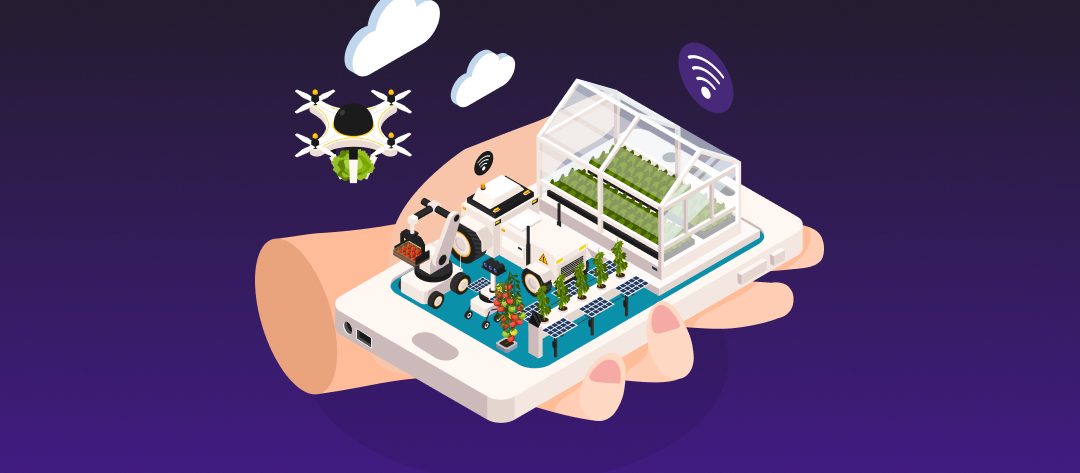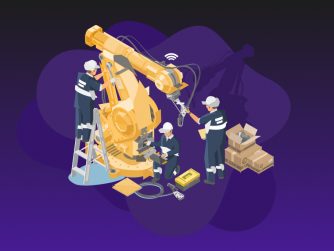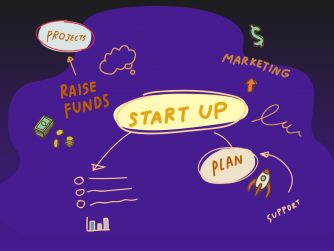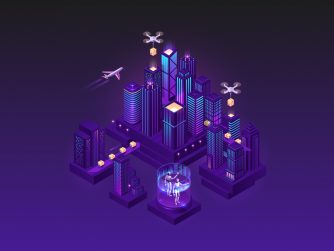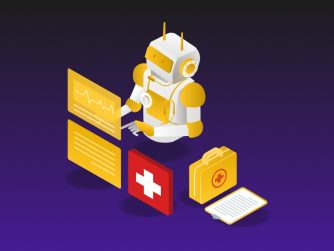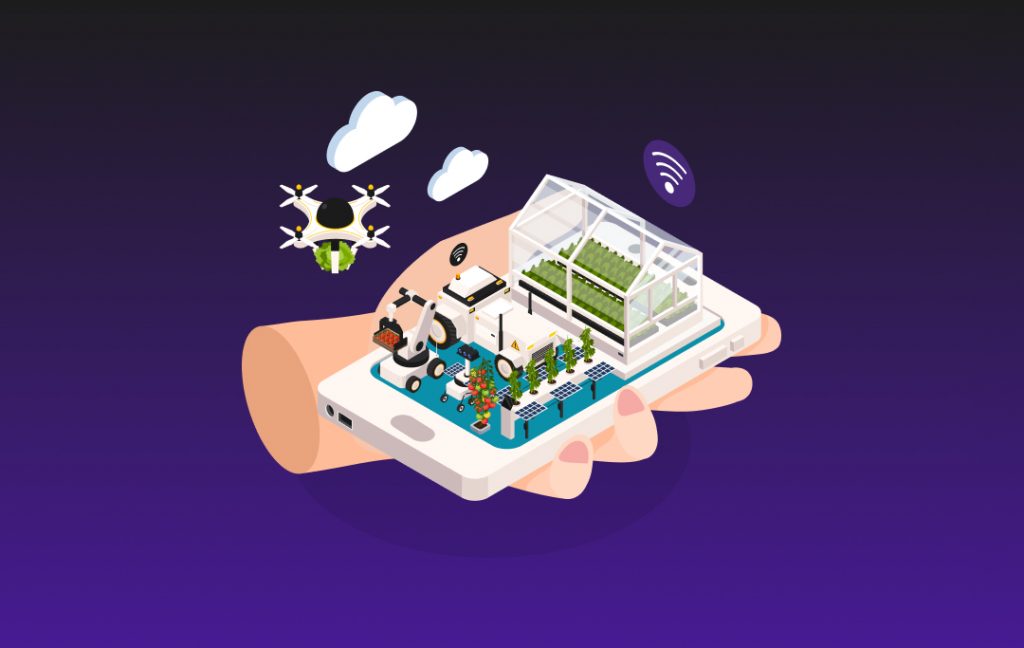
The problem
The world’s population is expected to reach 8.6 billion in 2030 and 9.8 billion in 2050.
This, in addition to the limited availability of natural resources such as fresh water and arable land and the shifting structure of the agricultural workforce, demands that the focus be shifted to enhancing farm yield.
The solution
It has long been believed that using technology in agriculture is the answer. Many emerging technologies hold promise for the future of farming—IoT in agriculture being one.
With the use of robots, drones, remote sensors, and computer imaging combined with continuously progressing machine learning and analytical tools, a wide array of functions can be performed.
This allows for monitoring crops, surveying, and mapping the fields, and providing data to farmers for rational farm management plans to save both time and money.
Use Cases for IoT Solutions
IoT devices have made it across almost every aspect of our lives—from health and fitness, home automation, and workplace automation, to smart cities and industries. Agriculture is no exception!
Over time, agriculture has also become industrialized and technology-driven. This has allowed farmers to gain better control over agricultural processes, hence, improving productivity.
What we discuss in this article are some of the applications of IoT in agriculture.
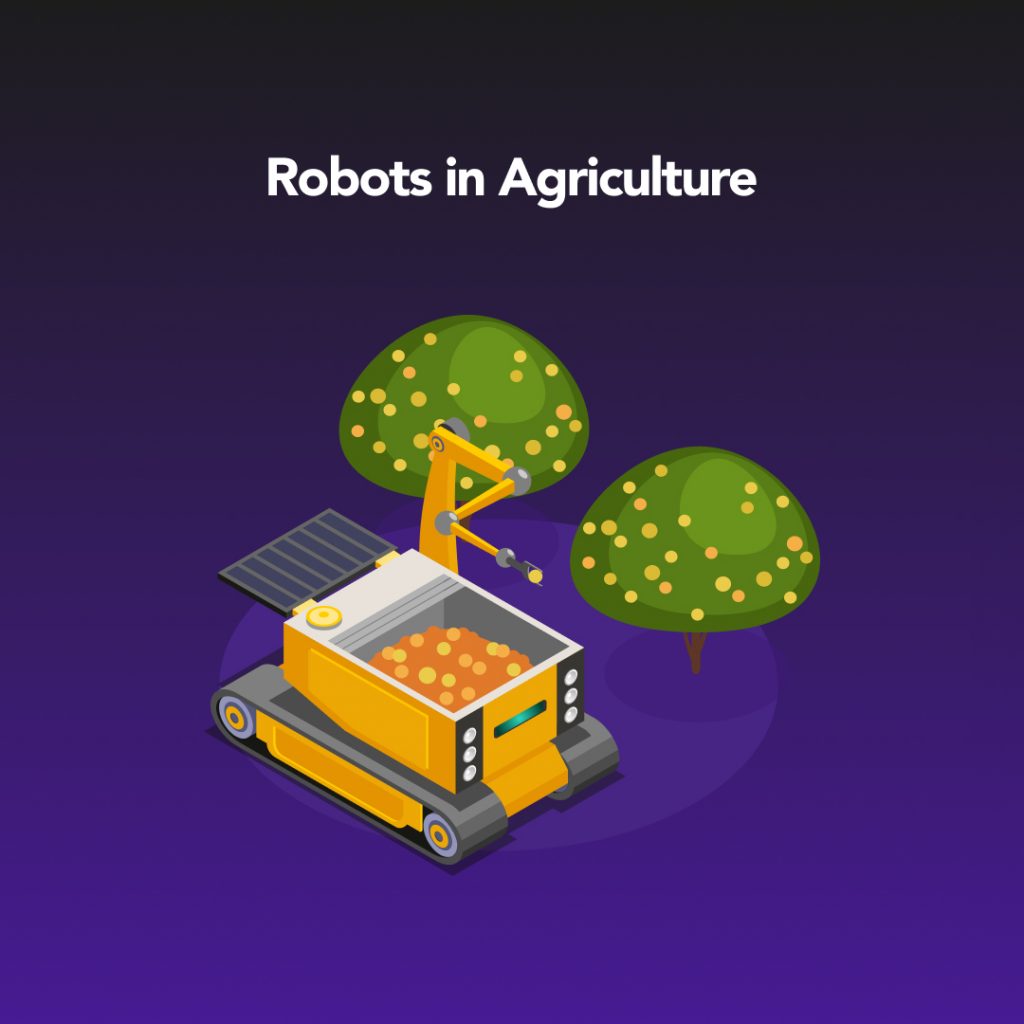
1. Robots in Agriculture
Agricultural robots assist farmers with a wide range of operations. They have the capability to analyze, contemplate, and carry out a multitude of functions, and they can be programmed to grow and evolve to match the needs of various tasks.
Some of these robots are:
- Nursery Planting Robots have automated solutions for seeding and potting plants in nurseries.
- Seeding Robots combine robotics with geo-mapping and place the seeds at precise locations and depths so that each seed has the best chance of growing.
- Weeding Robots provide a much more efficient method of killing weed; some even do it without using chemicals. Some use computer vision to detect plants and then automatically hoe the spaces in between the plants to uproot the weeds. Others use lasers to kill the weeds.
- Thinning and Pruning Robots help reduce the density of plants so that each plant has a better chance of growing.
- Harvesting Robots are automated to pick crops, and these innovative agri-bots can work 24*7. Harvesting is one of the most popular robotic applications in agriculture due to the accuracy and speed that robots can achieve to improve the size of yields and reduce waste from crops being left in the field.
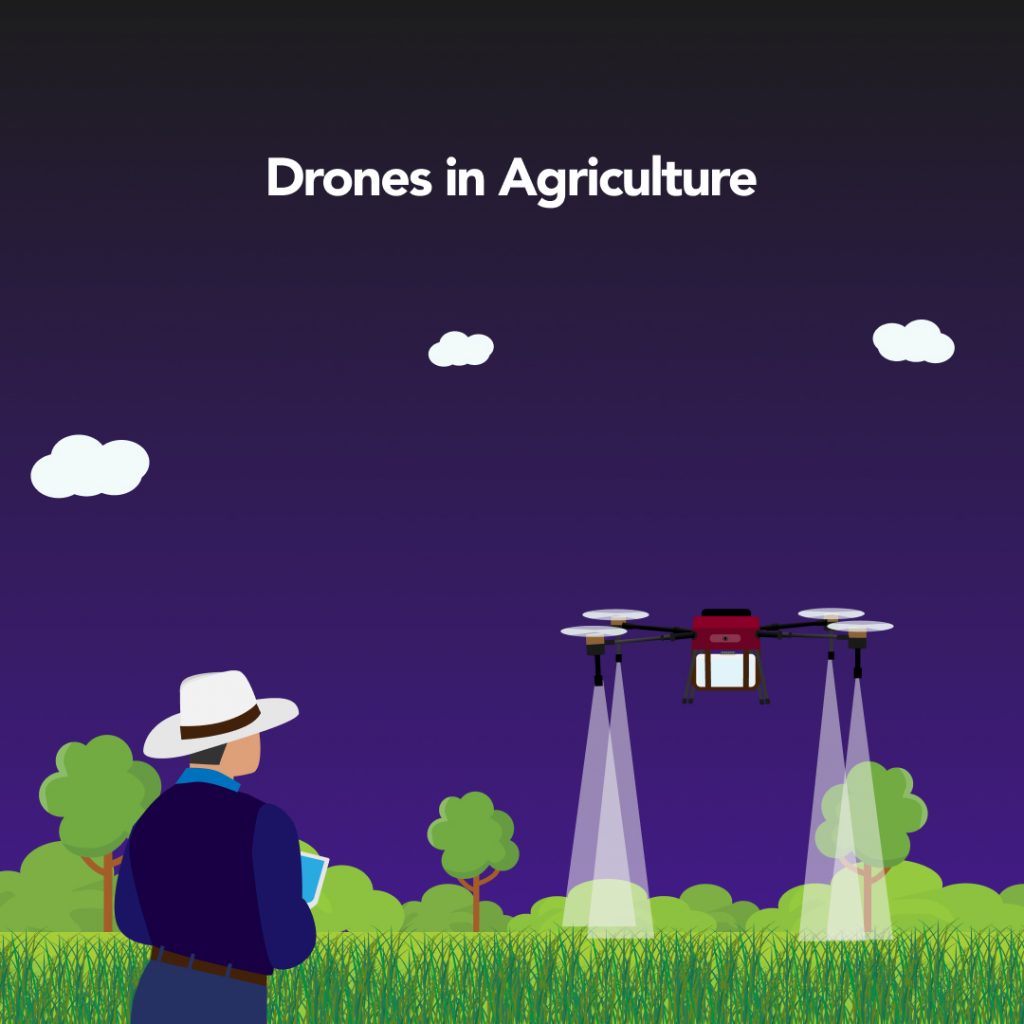
2. Drones in Agriculture
An agricultural drone is used mostly in yield optimization and in monitoring crop growth and crop production. Agricultural drones provide information on crop growth stages, crop health, and soil variations. Multispectral sensors are used on agricultural drones to image electromagnetic radiation beyond the visible spectrum, including near-infrared and short-wave infrared.
Some of the applications include:
- Drones for Monitoring Plant Health use imaging equipment called Normalized Difference Vegetation Index (NDVI) to indicate plant health. With this, farmers can monitor crops as they grow.
- Drones for Monitoring Field Conditions help monitor the health of soil and field conditions. accurate field mapping including elevation information so that farmers know of any irregularities in the field. Having information on field elevation is useful in determining drainage patterns and wet/dry spots, which allows for more efficient watering techniques.
- Drones for Spray Applications apply spray treatments and can easily navigate very hard-to-reach areas such as steep fields at high elevations.
- Drones for Security are very useful when it comes to farm management. They provide an overview of the farm operations throughout the day and can also be deployed to monitor fencing and parameters.
- Drones for Irrigation capture very accurate soil health information, including moisture levels, without the plants getting in the way. This means water can be distributed in a field most efficiently to conserve resources.

3. Remote Sensors in Agriculture
Remote sensing uses satellite images that take photos of a field over time so that the farmers can analyze conditions based on the data and take needed action.
Some of the sensors are:
- Sensors for Monitoring Crops help monitor the health of crops by using optical sensing to identify crops affected by weather, pests, etc. This technology has allowed farmers to observe their fields and make timely crop management decisions.
- Sensors for Observing Soil Conditions help monitor critical soil parameters like Soil Organic Matter (SOM), soil texture, soil pH level, moisture content, etc. Focusing on the link between crop performance and soil condition is vital to the understanding of crop growth patterns and changes in that.
- Sensors for Observing Water Conditions help monitor and access agricultural water resources to achieve sustainable food security and development. These provide accurate and timely information on water bodies, irrigated cropland, crop and soil water status, etc.
- Sensors for Predicting Weather collect data on humidity, temperature, moisture precipitation, and dew detection and help in determining the weather pattern in farms so that cultivation is done for suitable crops. These help farmers make decisions on crop management and schedule irrigation. These also help prepare against natural disasters.
- Sensors for Monitoring Climate Change help understand the weather and then plan accordingly to optimize crop yields.

4. Computer Imaging in Agriculture
Computer imaging involves the use of sensor cameras installed at different corners of the farm or drones equipped with cameras to produce images that undergo digital image processing. With this, images can be viewed in different spectral intensities, such as infrared. It also compares the images obtained over some time and detects anomalies, thus analyzing limiting factors and helping in better management of farms.
Some of the uses are:
- Computer Imaging for Quality Control uses images from databases to compare with images of crops to determine the size, shape, color, and growth, therefore, controlling the quality.
- Computer Imaging for Sorting and Grading helps increase the accuracy and time-efficiency of sorting and grading agricultural and food products based on their size, texture, color, and shape.
- Computer Imaging for Irrigation Monitoring helps in mapping irrigated lands. It also enables optimum irrigation scheduling based on soil moisture conditions, varying weather patterns, and plant physiological conditions
To conclude
Internet of Things (IoT)-enabled smart farming robots, drones, sensors, and computer imaging help inform decisions for productivity improvements. These devices leverage sensors and gateways to collect and analyze data. In addition to helping make informed decisions, the data can be further analyzed for automated decision-making and predictive analysis.
The use of IoT in agriculture holds promise for the future. Aerion Technologies and CRINNAC can help you leverage that promise. Get in touch for a FREE CONSULTATION today, and we will work with you throughout the process—from ideation to delivery of your IoT solution in agriculture.

